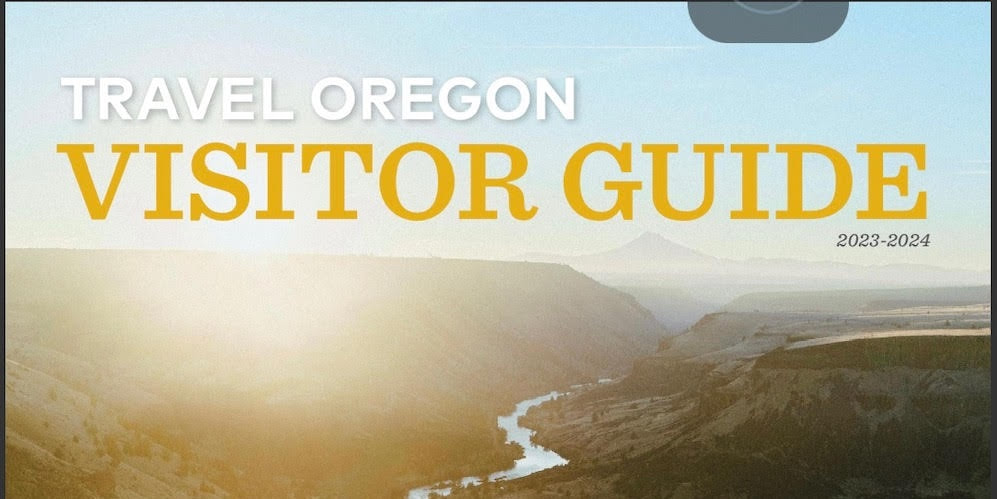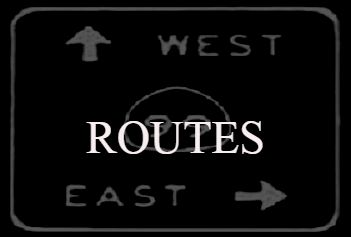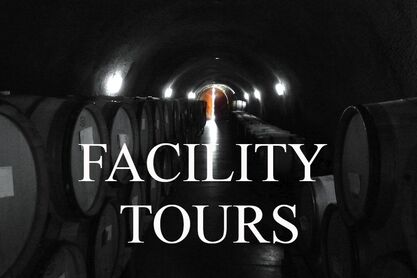Video at bottom.
Yamhill-Carlton District AVA - established 2005 -
This pastoral corner of Oregon’s northern Willamette Valley was the final destination for many of the early Oregon Trail pioneers. It is now being revitalized by a new wave of pioneers: committed, passionate winegrowers drawn to the area’s unique set of growing conditions. More
North of McMinnville adjacent to the Dundee Hills AVA, the foothills of the Coast Range create an AVA of nearly 60,000 acres, centered on the hamlets of Carlton and Yamhill.
Black Cherries and Vanilla
The Yamhill-Carlton AVA is rapidly emerging as a global center of Pinot Noir production. This pastoral northwest corner of the Willamette Valley provides a unique set of growing conditions. The Coast Range to the west soars to nearly 3500 feet (1200m) establishing a rain shadow over the entire district. Additional protection is afforded by the Chehalem Mountains to the north and the Dundee Hills to the east. It stays hotter later in the afternoon in this area, so you’ll find fruit-forward black cherry flavors in the Pinot Noir wines. The area is very spread out in terms of driving and you’ll find yourself driving miles in-between vineyards.
Key Producers in Yamhill-Carlton
Big Table Farm, Shea Vineyards, Anne Amie Vineyards, Elk Cove, Wilakenzie Estate, Penner Ash, Soter, Belle Pente, Resonance, & others
More about the Yamhill-Carlton AVA
Importantly, the coarse-grained ancient marine and glacial sedimentary soils native to the area are some of the oldest soils in the valley. These soils drain quickly establishing a natural deficit-irrigation effect. Low ridges surround the two communities in a horseshoe shape, with the North Yamhill River coursing through nurseries, grain fields, orchards and more than 1200 acres of vineyard.
The vineyards of the Yamhill-Carlton District were planted mostly in the late 1980’s and early 1990’s. The primary soil of this area is called Willakenzie, named after the Willamette and McKenzie rivers. It is a sedimentary soil with a sandstone base rock. The sand content is quite high and the soil therefore very well drained. The sites are generally on the lower slopes of a volcanic ridge. Wines of the area possess aromas of red and black fruits, with added elements of cocoa, leather and fresh-turned earth. Acidity levels are generally lower than other regions, prompting these wines to be lush and agreeable in their youth.
Carlton, Town of
Nestled between the rolling hills of Western Oregon, half way between Portland and the coast, you'll find Carlton; a great Little Town and a farming town which prides itself on a strong community and vibrant downtown. Carlton is located in the heart of Willamette Valley's Wine Country (The "Wine Capitol of Oregon") with over 40 wineries doing business within the city limits.
The Citizens of Carlton take pride in their "Great Little Town" which has lovely parks, an outdoor pool, a variety of downtown businesses and fine local schools.
As the story goes...
In 1872 a railroad was built from Portland to St. Joe, but the train did not stop between the two stations. There was nothing but farm land where Carlton is now. Some of the farmers talked it over and as a result Mr. Wilson Carl went to Portland and talked to the Railroad Company officials to see if they would make a stop closer to them so they would not have to take their produce so far to the railroad. As a result, first a flag stop was tried then a regular stop was made at what is now Carlton (Tyrus Evan Winery is the old train station). The story is that when the railroad employees talked of this unnamed stop, they started calling it Carl's town, which was soon shortened to Carlton.
The City was incorporated in 1899.
This short line (Carlton & Coast Railway) extended west from a connection with the Southern Pacific at Carlton, 14 miles west into the coast range along the North Yamhill River. The railroad was incorporated in 1910, started operating in 1912, and abandoned in 1940. Communities on the line included Pike, Fairdale, and Chesterbrook, with the line ending at a point called Tillamook Gate. The line was operated primarily for lumber interests as well as common traffic. In the 1930's the track length was extended slightly with 23 miles in operation. The company operated several geared logging locomotives and several standard steam locomotives during its time, the oldest of which was an ex-Southern Pacific 4-4-0 built in 1868.
Click link below for events within this AVA.
https://yamhillcarlton.org/events
The Dirt on Oregon AVAs
Yamhill-Carlton District AVA - established 2005 -
This pastoral corner of Oregon’s northern Willamette Valley was the final destination for many of the early Oregon Trail pioneers. It is now being revitalized by a new wave of pioneers: committed, passionate winegrowers drawn to the area’s unique set of growing conditions. More
North of McMinnville adjacent to the Dundee Hills AVA, the foothills of the Coast Range create an AVA of nearly 60,000 acres, centered on the hamlets of Carlton and Yamhill.
Black Cherries and Vanilla
The Yamhill-Carlton AVA is rapidly emerging as a global center of Pinot Noir production. This pastoral northwest corner of the Willamette Valley provides a unique set of growing conditions. The Coast Range to the west soars to nearly 3500 feet (1200m) establishing a rain shadow over the entire district. Additional protection is afforded by the Chehalem Mountains to the north and the Dundee Hills to the east. It stays hotter later in the afternoon in this area, so you’ll find fruit-forward black cherry flavors in the Pinot Noir wines. The area is very spread out in terms of driving and you’ll find yourself driving miles in-between vineyards.
Key Producers in Yamhill-Carlton
Big Table Farm, Shea Vineyards, Anne Amie Vineyards, Elk Cove, Wilakenzie Estate, Penner Ash, Soter, Belle Pente, Resonance, & others
More about the Yamhill-Carlton AVA
Importantly, the coarse-grained ancient marine and glacial sedimentary soils native to the area are some of the oldest soils in the valley. These soils drain quickly establishing a natural deficit-irrigation effect. Low ridges surround the two communities in a horseshoe shape, with the North Yamhill River coursing through nurseries, grain fields, orchards and more than 1200 acres of vineyard.
The vineyards of the Yamhill-Carlton District were planted mostly in the late 1980’s and early 1990’s. The primary soil of this area is called Willakenzie, named after the Willamette and McKenzie rivers. It is a sedimentary soil with a sandstone base rock. The sand content is quite high and the soil therefore very well drained. The sites are generally on the lower slopes of a volcanic ridge. Wines of the area possess aromas of red and black fruits, with added elements of cocoa, leather and fresh-turned earth. Acidity levels are generally lower than other regions, prompting these wines to be lush and agreeable in their youth.
Carlton, Town of
Nestled between the rolling hills of Western Oregon, half way between Portland and the coast, you'll find Carlton; a great Little Town and a farming town which prides itself on a strong community and vibrant downtown. Carlton is located in the heart of Willamette Valley's Wine Country (The "Wine Capitol of Oregon") with over 40 wineries doing business within the city limits.
The Citizens of Carlton take pride in their "Great Little Town" which has lovely parks, an outdoor pool, a variety of downtown businesses and fine local schools.
As the story goes...
In 1872 a railroad was built from Portland to St. Joe, but the train did not stop between the two stations. There was nothing but farm land where Carlton is now. Some of the farmers talked it over and as a result Mr. Wilson Carl went to Portland and talked to the Railroad Company officials to see if they would make a stop closer to them so they would not have to take their produce so far to the railroad. As a result, first a flag stop was tried then a regular stop was made at what is now Carlton (Tyrus Evan Winery is the old train station). The story is that when the railroad employees talked of this unnamed stop, they started calling it Carl's town, which was soon shortened to Carlton.
The City was incorporated in 1899.
This short line (Carlton & Coast Railway) extended west from a connection with the Southern Pacific at Carlton, 14 miles west into the coast range along the North Yamhill River. The railroad was incorporated in 1910, started operating in 1912, and abandoned in 1940. Communities on the line included Pike, Fairdale, and Chesterbrook, with the line ending at a point called Tillamook Gate. The line was operated primarily for lumber interests as well as common traffic. In the 1930's the track length was extended slightly with 23 miles in operation. The company operated several geared logging locomotives and several standard steam locomotives during its time, the oldest of which was an ex-Southern Pacific 4-4-0 built in 1868.
Click link below for events within this AVA.
https://yamhillcarlton.org/events
The Dirt on Oregon AVAs















